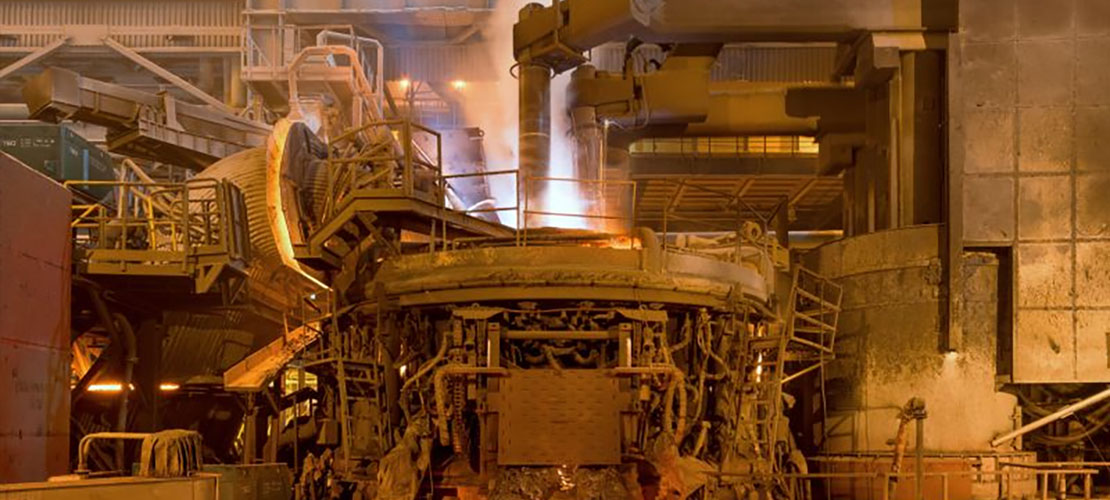Jun. 16, 2025

When building a new short-process electric furnace steel plant or renovating an electric furnace steel plant, the enterprise faces the choice of AC or DC arc furnace. So which arc furnace should be chosen? We need to understand the advantages and disadvantages of the two arc furnaces. According to relevant information, the choice of DC or AC arc furnace, the electrical parameters during design and the economy during actual use are very different.
AC arc furnace: In an AC arc furnace, electrical energy is transmitted from a transformer through a metal conductor and a graphite electrode to three arcs burning on the charge. The sum of the three phase differences of the AC power is always zero, so there is no need to attach a current extraction device to the bottom of the furnace shell. As a result, when adjusting the current size, the length and voltage changes of one arc should be considered. The impact on the total three-phase current.
DC arc furnace: In a DC arc furnace, the AC power input from the transformer is converted into DC current through a rectifier, transmitted to the only arc through a reactor, and a current loop is formed through one or more bottom electrodes. The current adjusted by the rectifier has nothing to do with the arc voltage, which is controlled by adjusting the graphite electrode.
(1) During the smelting process of a DC furnace, the magnetic field force generated by the power supply has a stronger stirring ability for the molten pool than that of an AC furnace. The decarburization, dephosphorization and degassing reactions of a DC furnace are faster than those of an AC furnace, which is more conducive to operation. The magnetic field stirring effect of a DC furnace is equivalent to the effect of an electric furnace that generally uses bottom blowing technology.
(2) Since the desulfurization reaction mainly occurs during the reduction period. The alkalinity of electric furnace smelting is generally controlled between 2.0 and 2.5, and the alkalinity during actual operation is between 1.8 and 2.5. The amount of desulfurization during the oxidation period of the electric furnace is very small, not exceeding 20%, and so there is little difference between the two in terms of desulfurization reaction.
(3) In some special cases, when it comes to deleading and dezincification operations, a DC furnace is faster and more effective than an AC furnace.
(4) The difference between the electrochemical reactions of DC furnaces and AC furnaces is not large.
(5) There is no arc deviation in AC furnaces, and the arc length is shorter than that of DC furnaces. The difficulty of controlling foam slag in DC furnaces is lower than that of AC furnaces.
(6) In the smelting process, DC furnaces have higher requirements for the amount of steel left after steel tapping and the conductivity of scrap steel, otherwise the bottom electrode will not be conductive. Therefore, the requirements of vertical current furnaces for scrap steel are higher. The requirements of AC furnaces for scrap steel are lower than those of DC furnaces. After the bottom electrode is not conductive, the molten pool needs to be treated for a long time under high temperature conditions. Generally speaking, the accident rate of DC furnaces is higher than that of AC furnaces.
(7) The arrangement of the pole center circle of the AC furnace makes the cold zone of the AC furnace relatively small. On the contrary, the cold zone of DC furnace is more than that of AC furnace, and EBT cold zone is prone to occur. The scrap steel in the cold zone of the furnace wall is adhered in large quantities, resulting in phenomena such as abnormal steel composition and unstable steel output, causing the slag line of the ladle to move down, reducing the service life of the ladle, etc.
(8) The characteristics of the bottom electrode of the DC furnace limit the steel output temperature of the DC furnace, which is generally less than 1630℃, so it is not conducive to the dynamic adjustment of temperature in production, and there are limitations in deoxidation, removal of inclusions, and desulfurization during the steel output process. In this regard, the AC furnace has a wider temperature requirement, which is more conducive to dynamic control of production and strengthening of metallurgical reactions in the steel output process.
Latest News
Latest Products
Customized metallurgical machinery and equipment range: Electric Arc Furnace, Submerged Arc Furnace, LF Refining Furnace, Vacuum Furnace, Induction Furnace, Dust Remove System, Water Treatment Equipment, etc. Providing the most advanced equipment integration services, metallurgical equipment can be customized according to different needs of customers, and production capacity can be adjusted according to customer requirements.
Electric Arc Furnace
Submerged Arc Furnace
LF Refining Furnace
VD / VOD Vacuum Refining Furnace
Induction Furnace
Furnace Accessories
Navigation
E-mail: anna@srfurnace.com
Tel: +86 159 2955 5868
WhatsApp: +86 159 2955 5868
Add:
Room 102, Building 7A, Free Trade Xintiandi, Fengdong Avenue, Fengdong New Town, Xi'an City, Shaanxi Province
